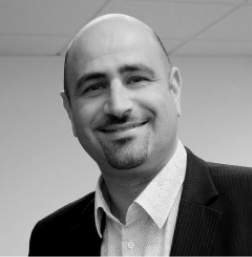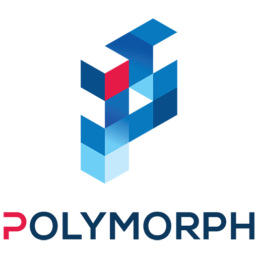Fabrice GUICHARD
Rennes, FR
Founder and Director of the graphic studio POLYMORPH created in 2002. Sector Industry, Museography, leisure and entertainment, AR, VR, Serious Game, 3D, 4D, collaborative / individual.


Biography
Fabrice Guichard is the founder and director of the graphic studio Polymorphe, which has existed since 2002 and now has about twenty collaborators. We work mainly in the industry, museography and leisure and entertainment sectors, mainly in media production. For the industrial part, we design training solutions, simulation tools and then communication solutions that can be with VR, augmented reality and serious games. Concerning the museography part, we deploy cultural mediation tools for museums and science centers and concerning the leisure and entertainment sector, we work mainly in the media production of 3D and 4D films and finally collaborative or individual VR experiences.
Fabrice Guichard's answers
Hello everyone, I am Fabrice Guichard, the founder and director of the Polymorphe graphic studio, which has existed since 2002 and which today has around twenty employees. We work mainly in the sectors of industry, museography and leisure and entertainment, mainly in media production. For the industrial part, we design training solutions, simulation tools and then communication solutions that can be with VR, augmented reality and serious games.
Concerning the museography part, we deploy cultural mediation tools available to museums and science centers and concerning the leisure and entertainment sector, we work mainly in the production of media, 3D and 4D films and then VR experiences. collaborative or individual.
A training in Creative Media would in fact give a 360 degree vision. A bit of all the types of media existing today and also whether in the media of diffusion, but also in the modes of exploitation and in the methodologies of production.
We realize that today, there are plenty of broadcast media that are very different and there are very few people who know how to work with these media who will know how to tell stories. We tend to have people who are specialized on cinema screens, on video game screens, but to have people who will be able to work equally well on a narration, in a dome, a narration in a helmet, than on a movie screen. For us, it makes sense because these are different media. And today, there is an interest, especially with the rise in power of the notion of immersiveness. And suddenly, for us, it is a value that is very, very important.
Me, I would see today a module which would be purely technical on the knowledge of the various supports. Whether it’s print, cinema, TV, video games or VR experiences, mobile applications or anything projection mapping because these are standards in broadcasting today. And there are narration and storytelling methods that are specific to these media. And so, for me, it’s important that the people who are going to take part in this future master’s have a truly 360° vision of everything that exists on the market today, whether for industry, whether for museography, whether for leisure. And I think there are other sectors of activity that use other broadcast media that are different, but to have already on this first list gives a global vision. For me, it’s relevant.
The other module that I imagined was precisely to understand their mode of operation, namely their use, their exploitation, their scenography, their mode of narration, the storytelling part to also have a vision of everything that collaborative approach. And then, immersivity, the collaborative approach, these are really the two trends that are for me, which will grow in the years to come.
And then with, let’s say, references. Because I think there is a need, especially in industry, a need in museography and in culture. There are also needs in the audiovisual sector. So, it’s important to expand for each medium, with references that will be specific, so as not to have people who are only linked to a single domain. Because often, we have artists who create works for the sake of creating works, when in fact there are plenty of areas in industry, in culture, in the audiovisual sector, where there is possible radiation in the video game.
And sometimes, we have artists who are only artists. We can manage to open up the field of possibilities a little. That’s something that could be good. A part on a module that I imagined more on media production because today, technologies are changing, for example on everything that is CGI Productions, pre-calculation, real time converges. There is production on everything that is live production, web, print production. It’s important to really have a 360 degree approach.
A module on the user journey. Because for me, it’s important that the students who are going to graduate from this master’s have a global vision. In fact, experiences that are going to be offered, whether it’s on the use of technologies, the use of storytelling, the type of media. And then also know how to present and justify the use of media, whether it is to the end customer, but also to the production teams. For me, that is something that makes sense.
Another module that seemed important to me was the project management part, because these people will be brought behind to manage projects, experiences with clients, with teams. So, for me, it’s essential.
A financial module because it is important to know, let’s say, the production cost of a medium according to the broadcast medium. For example, a movie on a dome projection is much more expensive than a movie on a standard cinema screen. Quite simply because with the dome, we have a much larger field of vision. And so, that’s one of the things you need to know when you’re working on media and when you’re going to initialize productions. Have an idea, costs, material too.
A team management module because these people will be required, in my opinion, to lead teams and you have to know how to get your ideas across. And then, managing both the client and the team.
And for me, everything should be accompanied by fairly concrete exercises, in particular on the various distribution media that I was able to list at the very start, in the somewhat purely technical module part.
On the knowledge part, I had noted having a knowledge and a 360 degree vision of the existing broadcast media, their mode of narration and their functioning. What I think in relation to what we will call “creative Media” is that there is a technological watch which will be important because there are bound to be new media and distribution devices which will be will come to market.
But having a broad knowledge today of everything that exists for me is essential and knowing how we tell a story with these devices, and how they work with the public. It is something that is essential.
Then, in terms of know-how, what seemed essential to me was to identify, to be able to quickly identify the best solution in relation to a client’s need and the budgetary impact. So, a client who comes to see you and who has a well-defined amount, it’s useless to try to offer solutions that will blow his budget for which he will not be receptive. So the know-how, to propose relevant solutions. For me it is something essential
In the ability to design, namely to produce media adapted to the experience, precisely with this respect for the budget. This is something that, for me, still seems essential.
In the ability to achieve, I had put knowing, presenting and defending his project both to the end customer and to the production team, and above all I had put to know and identify the production tools that will prove to be the most relevant for production. Don’t reinvent the wheel every time you have a production to do, try to go straight to the point.
So it’s true that we work in the industrial sectors, the museography and entertainment sectors. So, for each of these sectors, there are very strong expectations and developments. And therefore have someone who already has, in terms of approach, knowledge of all these existing media. This is a real plus, because today, even if our artistic directors, our animation directors are very competent, we have to make them aware of the different types of media, production of media on a dome or production of media in a virtual reality headset, an augmented reality experience are experiences that are very different from each other, with modes of narration, storytelling that mean that today we are not gone through experimentation and discussion. Let’s say a deployment and user feedback. It is apprehended in a rather difficult way. So today, we are lucky to have a team that is starting to get used to certain devices. But having a team that knows and already anticipates the needs and constraints of the different media is a real plus.
For me, today, I identified three.
The first is everything related to immersiveness and that’s really something, it’s a trend that appeared with the arrival of the first virtual reality headsets and in particular the Oculus™ headset. And today, we realize that there is a very strong demand, somewhat in all sectors, to provide this immersiveness, whether through headset systems, whether through giant projection screen with projection mapping. That is something that is happening in force today. In museums, we are starting to see the first helmets arrive with virtual visit experiences, with escape game experiences, collaborative tools in the industry. This makes it possible to offer tools and training solutions that allow, in a very small space, to find themselves with a train, an airplane on which the learners will be able to interact for maintenance and safety solutions. And so it makes it possible to avoid monopolizing a train, an airplane in reality. So these are training tools that are becoming very effective, very relevant and which, above all, allow a notion of collaboration with sharing tools, with dialogue tools, whether for training in the fields, to validate knowledge and to validate skills.
There is the notion of interactivity. We now manage to have interactivity on this tablet, to offer more and more advanced tools. So, for me, it’s something that will emerge more and more. Today, we have a lot of interactivity in the field of museology, in the field of leisure and entertainment, but it’s the same throughout the industrial part. There are a lot of things that are in place.
The latest trend is the convergence of graphic renderings, particularly in computer-generated images, between so-called pre-calculated technologies and real-time 3D technologies. Today, the graphic quality of video game-type real-time 3D renderings is approaching the quality of images that are pre-calculated. And for me it’s a real revolution because it will encourage all artists to work with real-time 3D engines which offer enormous possibilities. We can imagine finding ourselves in 360-degree interactive films, so it’s really something that’s going to be very innovative in the next one or two years, and particularly in the mode of production, because using mode, a real-time 3D graphics rendering mode, this saves rendering time. Because today, when we calculate an animated film in 3D or 4D, we can end up with durations, voila, one month, two months or three months of graphic rendering with “Render Farm”. And there, with the rendered part, what we call “RealTime”. We will be able to optimize these months of rendering in the space of a few weeks and therefore it will bring flexibility in production and bring flexibility at the client level. Know if tomorrow a customer wants us to change the color, or to change certain objects. We will be more constrained by these months of rendering “that we could not avoid”. We will gain enormous flexibility. For me, this is something that is very important, which is a real asset in your job. For me, it’s a real revolution.
So today, it’s actually part of the positions, the types of profiles that we are looking for, people who have precisely this somewhat 360 degree vision of the different types of existing media. Because, due to our field of activity, we touch on a lot of areas and we are led in particular, on the leisure and entertainment part, to work on experiences that are truly multimedia, in the sense that we can work on a dome , on a “dark ride” with interactive screens. We can work on augmented reality experiences with tablets. We can work on collaborative experiences, in virtual reality. And for that, we need people who know how to produce media for this type of experience.
Indeed, for me there is a course to offer including very practical exercises on all media. And then, for me, there is an awareness to be made to prevent certain artists, future artists from remaining stuck in the conception of cultural, artistic works. I think there is an awareness, inviting them to discover everything that happens in the industry, in museography, in culture, in cinema, in leisure. And I think there are other industries. Today, there is a real richness in the notion of “creative media” and this sensitivity needs to be heightened. You really have to invite them to go beyond making a creative work. There are demands, there are expectations and there are a lot of things. We can bring a lot of creativity into industry, museography, cinema and leisure.



